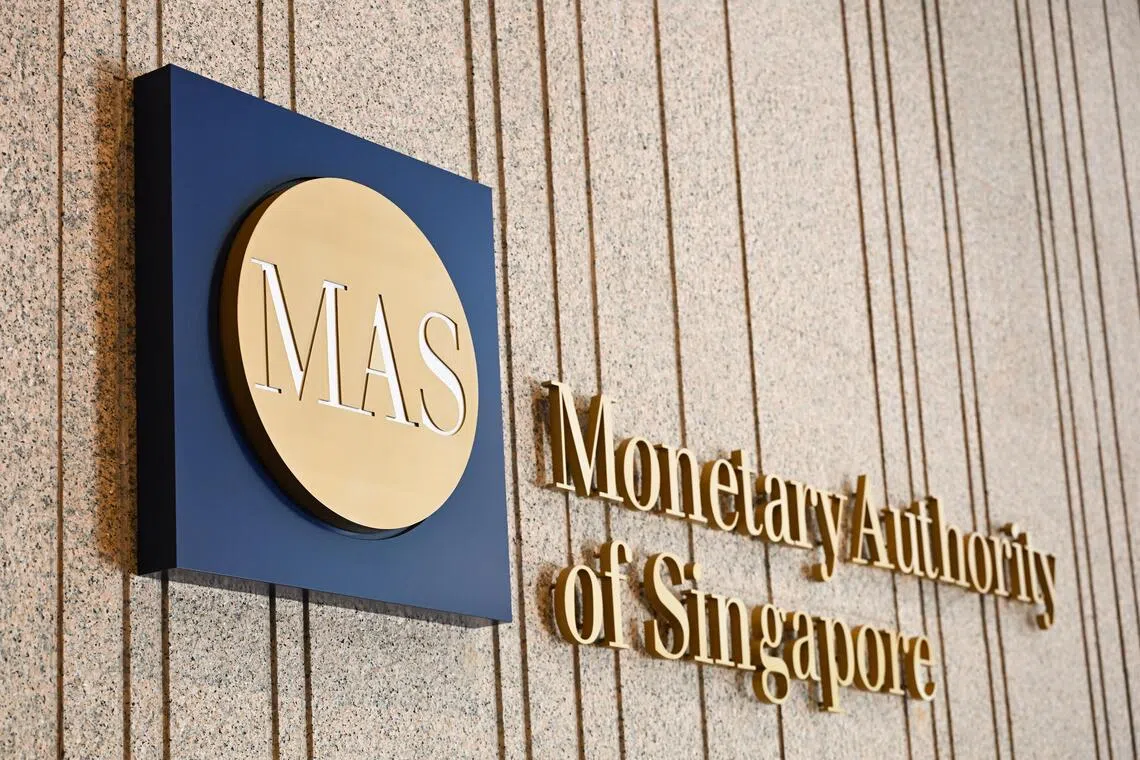MAS keeps Singdollar policy unchanged as it weighs low inflation v tariff risks to growth
Sign up now: Get ST's newsletters delivered to your inbox

Singapore's central bank says the economy continues to show resilience despite the drag from US tariffs.
PHOTO: ST FILE
Follow topic:
SINGAPORE – Singapore’s central bank left the pace of the local currency’s trade-weighted appreciation unchanged, as the economy continues to show resilience despite the drag on global trade from US President Donald Trump’s tariffs.
The Monetary Authority of Singapore (MAS) said core inflation – which excludes private transport and accommodation costs to better represent household expenses – will average 0.5 per cent in 2025, and between 0.5 per cent and 1.5 per cent in 2026.
In July, MAS projected core inflation to average 0.5 per cent to 1.5 per cent in 2025.
“MAS will therefore maintain the prevailing rate of appreciation of the S$Neer policy band. There will be no change to its width and the level at which it is centred,” it announced on Oct 14.
The decision to keep monetary policy unchanged was widely expected.
Unlike other central banks, MAS manages monetary policy by allowing the local dollar to rise or fall against a basket of currencies of Singapore’s main trading partners within an undisclosed trading band, called the S$Neer.
MAS had eased the pace of S$Neer appreciation twice earlier in 2025 – in January and April – as Mr Trump unleashed a slew of tariffs on almost all of America’s trading partners.
Despite uncertainty over the outlook, the global economy and Singapore’s domestic economy have been resilient thus far, as exporters worldwide and importers in the US went on a sprint to ship as many goods as possible before the tariffs became effective.
The phenomenon referred to as front-loading sustained exports and economic growth until August 2025, when the so-called reciprocal tariffs on virtually all US imports came into effect.
The Ministry of Trade and Industry said on Oct 14 that the economy grew 2.9 per cent year on year in the third quarter of 2025, slowing from the 4.5 per cent growth in the previous quarter, but better than expected.

PHOTO: MONETARY AUTHORITY OF SINGAPORE
While Singapore is subject to a 10 per cent baseline tariff, which was announced in April, Mr Trump on Sept 25 revealed a 100 per cent tariff on US imports of branded or patented pharmaceutical products, effective Oct 1.
But the tariff has an exemption: It does not apply to companies that have already broken ground on building a manufacturing plant in the US.
Analysts said the new tariff may have limited impact on Singapore’s pharmaceutical exports, as most major players with a presence here have already committed to building new US facilities, which will qualify them for exemption.
Still, Asian exporting nations including Singapore – being the most exposed to US final demand – are likely to suffer the most as continued expansion of protectionist measures dampens growth in trade and future investment inflows.
Also, more pain is likely if Mr Trump imposes tariffs on US semiconductor imports, another key driver of the Singapore economy.
MAS said it is monitoring closely the actual implementation of the tariffs, and the risks of renewed trade conflict and disruption.
“Singapore’s gross domestic product growth is expected to moderate from this above-trend pace in the upcoming quarters as activity normalises in the trade-related sectors,” it said.
However, continuing global investments related to artificial intelligence (AI) will provide some support for the domestic manufacturing sector, while growth in construction and financial services should be bolstered by infrastructure investment and accommodative financial conditions, the central bank said.
It said, though, that “an abrupt correction in the AI investment boom and the associated exuberance of financial markets is another downside risk to the growth outlook”.
Lower global energy prices, broad-based US dollar weakness, and declines in regional export and producer prices have been lowering Singapore’s imported prices, according to MAS in its quarterly macroeconomic review released on Oct 14.
Soft demand in some consumer segments and increased competition have also weighed on inflation.
“For example, sales volumes at restaurants have been weak, possibly tempering the firms’ ability to raise prices, and driving restaurant food inflation to historically low levels,” added the central bank, noting that this contrasted with the “firmer” demand for hawker food.
Core inflation, MAS said, could thus edge down further in the near term, but some of the factors dampening it are expected to diminish in the quarters ahead.
“Imported costs should exert a smaller drag on inflation in 2026, given projections for a more gradual decline in global crude oil prices, as well as a modest pickup in regional inflation from the easing this year,” it said.
“On the domestic front, services unit labour costs growth is projected to rise in 2026 as productivity growth normalises.”


